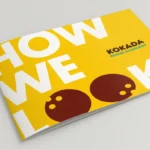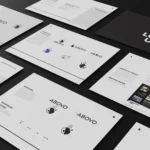10MM Storytelling
By Jack Winders.
Think of your best friend. Think of your mom. Now think of your dad or even your favorite company or brand. Think of how you explain those people or organizations to others. Your mind is flooded with stories and experiences
you’ve had with them. This is how people, companies and organizations represent themselves and build their brand: By giving others an experience with them. Hopefully, that experience is one that is positive.
As we think about the arsenal of marketing tools we have available to us (both as individuals and as companies), one of the most vital pieces are testimonials: People’s stories about their experiences with us. What are people saying about us? Who are they telling about us? More importantly: Are they talking about us at all?
Give them a story worth telling, and they will tell it.
10MM sat down with Dr. Michael Burns (known simply as “Burns”) to talk about the one thing he explains has been present, vital and influential in every culture and in every part of history and time: Storytelling.
While working towards his PhD as an instructor at NDSU, Burns studied persuasion and more specifically, storytelling. “I became fascinated while I was in the industry with why people do what they do and how we can make people do things,” he explains.
According to Burns, storytelling is one of the most important pieces of human history and without it, the world would be a much different place than it is today. “I believe storytelling is how the world moves, functions, how relationships are formed, why we buy things, why we do things, why we believe things,” says Burns. As the only form of communication encompassing all times and all cultures, stories certainly matter. “The better storyteller you are, I honestly believe the better communicator you are,” he continues.
People know a good story when they hear one. But putting those components to paper proves to be more difficult. According to Burns, the two overarching themes which create a good story are:
- Narrative probability
Put simply, narrative probability refers to whether or not the story makes sense. “Do the characters do what they should be doing; does it all line up; can you follow the story?” explains Burns.
- Narrative fidelity.
The concept of narrative fidelity is the less obvious of the two, but is arguably as important. Narrative fidelity is what makes a story ring true with the listener, or as Burns puts it, “Does it give you the feels?” For example, narrative fidelity and the way a story relates to one’s personal experiences is the reason some [musical] songs hit home and resonate with the listener while others do not evoke much emotion at all.
While stories connect people to one another, they also have the power to connect people to organizations. “A lot of what we focus on from a personal standpoint – interpersonal relationships – can actually be brought into the organizational standpoint,” says Burns. “We’re at a point in our history where storytelling and relationships have never been more important.” With that in mind, it is crucial for your organization to be telling its story consistently and honestly. In order for your story to bring value, the story being told must be the same story across the board. Whether it is something formal such as advertising, or something very informal like a conversation one of your employee’s is having at happy hour, the story of your company has to line up – i.e. narrative probability.
“Whether you are training your brand new employee who is going to be on the front lines checking you out at the supermarket, or you are the corporate communication director or CEO of that same grocery store… those people should tell the same stories,” explains Burns. “When they don’t line up, that means your organization is not lining up, which is ultimately going to result in a communication breakdown and the organization is going to suffer.”
Becoming a storyteller, or implementing the concept of storytelling in your business, does not have to be a difficult process but it will take time. According Burns, who also consults for small companies and startups, one of the best ways to begin telling your story is to ask everyone in the organization, “What does your company do? Why do you do this? What do you value? What does your company value?” Most of the time, “It is amazing how different the answers are from person to person,” he says. “You need to look for the overlaps in their answers.” Those overlaps will be the starting points, and often foundations, of your company and brand. Those overlaps can also illustrate pain points or places in your organization that need improvement or re-training.
Finding and identifying your foundational values, morals and stories will only be your starting point to begin and grow. The next piece to identify: The most special thing(s) in your organization or as Burns calls them, your “black squirrels.” The term “black squirrel” comes from Kent State in Ohio and refers to the black squirrels inhabiting the campus developing a popularity among current and prospective students. “People told stories about the black squirrels; people remembered Kent State because of the black squirrels; their admissions went up and people wanted to know about these black squirrels,” explains Burns. These black squirrels are a part of Kent State that cannot be controlled. They were not strategically placed by administration and they were never a part of the University’s marketing or branding strategy. In the context of business, your “black squirrel” is whatever makes your company unique that nobody else has. Whatever it is, utilize it. Your company will be more memorable, more identifiable and more authentic as a result.
Stories are everywhere. Crossing all boundaries of time and place, they have shaped our world into what we have today. Just like they have in the past, stories will continue to evoke change and promote progress. In our digital world, it can be easy for a brand to lose touch with its customers. Because of this, being deliberate about your story has never been more important in business.
Look for the overlaps. Find your black squirrel. Be a storyteller.






